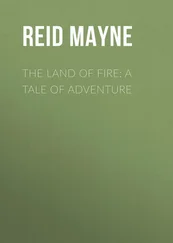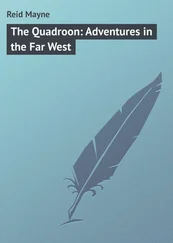Mayne Reid - Popular Adventure Tales
Здесь есть возможность читать онлайн «Mayne Reid - Popular Adventure Tales» — ознакомительный отрывок электронной книги совершенно бесплатно, а после прочтения отрывка купить полную версию. В некоторых случаях можно слушать аудио, скачать через торрент в формате fb2 и присутствует краткое содержание. Жанр: literature_19, foreign_antique, foreign_prose, foreign_children, на английском языке. Описание произведения, (предисловие) а так же отзывы посетителей доступны на портале библиотеки ЛибКат.
- Название:Popular Adventure Tales
- Автор:
- Жанр:
- Год:неизвестен
- ISBN:нет данных
- Рейтинг книги:3 / 5. Голосов: 1
-
Избранное:Добавить в избранное
- Отзывы:
-
Ваша оценка:
- 60
- 1
- 2
- 3
- 4
- 5
Popular Adventure Tales: краткое содержание, описание и аннотация
Предлагаем к чтению аннотацию, описание, краткое содержание или предисловие (зависит от того, что написал сам автор книги «Popular Adventure Tales»). Если вы не нашли необходимую информацию о книге — напишите в комментариях, мы постараемся отыскать её.
Popular Adventure Tales — читать онлайн ознакомительный отрывок
Ниже представлен текст книги, разбитый по страницам. Система сохранения места последней прочитанной страницы, позволяет с удобством читать онлайн бесплатно книгу «Popular Adventure Tales», без необходимости каждый раз заново искать на чём Вы остановились. Поставьте закладку, и сможете в любой момент перейти на страницу, на которой закончили чтение.
Интервал:
Закладка:
“Is it necessary the night should be a dark one?” asked François.
“The darker the better,” replied Norman. “To-night, if I am not mistaken, will be as black as pitch. But we need to make some preparations. It is near sundown, and we shall have just time to get ready for the business. Let us get ashore, then, as quickly as possible.”
“Oh! certainly – let us land,” replied all three at once.
The canoe was now turned to the shore; and when it had arrived within a few feet of the land it was brought to a stop. Its keel was not allowed to touch the bottom of the river, as that would have injured the little craft. The greatest precaution is always observed both in landing and embarking these vessels. The voyageurs first get out and wade to the shore, one or two remaining to hold the canoe in its place. The cargo, whatever it be, is then taken out and landed; and after that the canoe itself is lifted out of the water, and carried ashore, where it is set, bottom upward, to dry.
The birch-bark canoe is so frail a structure, that, were it brought rudely in contact either with the bottom or the bank, it would be very much damaged, or might go to pieces altogether. Hence the care with which it is handled. It is dangerous, also, to stand upright in it, as it is so “crank” that it would easily turn over, and spill both canoe-men and cargo into the water. The voyageurs, therefore, when once they have got in, remain seated during the whole passage, shifting about as little as they can help. When landed for the night, the canoe is always taken out of the water as described. The bark is of a somewhat spongy nature; and if left in the water for a length of time, would become soaked and heavy, and would not run so well. When kept all night, bottom upward, it drips and becomes dryer and lighter. In the morning, at the commencement of the day's journey, it sits higher upon the water than in the afternoon and evening, and is at that time more easily paddled along.
Our voyageurs, having got on shore, first kindled a fire to cook their supper. This they intended to despatch earlier than usual, so as to give them the early part of the night for their swan hunt, which they expected to finish before midnight. Lucien did the cooking, while Norman, assisted by Basil and François, made his preparations for the hunt. François, who was more interested in the result than any of them, watched every movement of his cousin. Nothing escaped him.
Norman proceeded as follows: —
He walked off into the woods, accompanied by François. After going about an hundred yards or so, he stopped at the foot of a certain tree. The tree was a birch – easily distinguished by its smooth, silvery bark. By means of his sharp hunting-knife he “girdled” this tree near the ground, and then higher up, so that the length between the two “girdlings,” or circular cuttings, was about four feet. He then made a longitudinal incision by drawing the point of his knife from one circle to the other. This done he inserted the blade under the bark, and peeled it off, as he would have taken the skin from a buffalo. The tree was a foot in diameter, consequently the bark, when stripped off and spread flat, was about three feet in width; for you must remember that the circumference of a circle or a cylinder is always about three times the length of its diameter, and therefore a tree is three times as much “ round ” as it is “ through .”
They now returned to the camp-fire, taking along with them the piece of bark that had been cut off. This was spread out, though not quite flat, still leaving it somewhat curved. The convex side, that which had lain towards the tree, was now blackened with pulverized charcoal, which Norman had directed Basil to prepare for the purpose; and to the bark at one end was fastened a stake or shaft. Nothing more remained but to fix this stake in the canoe, in an upright position near the bow, and in such a way that the bottom of the piece of bark would be upon a level with the seats, with its hollow side looking forward. It would thus form a screen, and prevent those in the canoe from being seen by any creature that might be ahead.
When all this had been arranged, Norman shouldered the axe, and again walked off into the woods. This time his object was to obtain a quantity of “knots” of the pitch-pine ( Pinus rigida ), which he knew would most likely be found in such a situation. The tree was soon discovered, and pointed out to François, who accompanied him as before. François saw that it was a tree of about fifty feet in height, and a foot in diameter at its base. Its bark was thick, very dark in the colour, and full of cracks or fissures. Its leaves, or “needles,” were about three inches long, and grew in threes, each three forming a little bunch, bound together at its base by a brownish sheath.
These bunches, in botanical language, are termed “fasciles.” The cones were somewhat shorter than the leaves, nearly the shape of eggs, and clustered together in threes and fours. François noticed that the tree was thickly branched, and therefore there are many knots in the wood. For this reason it is not much use as timber; but on account of the resin which it contains, it is the best species for firewood; and for that purpose it is used in all parts of the United States, where it grows. Most of the pine-wood sold for fuel in the large cities of America is the wood of this species.
François supposed that his companion was about to fell one of the trees. He was mistaken, however; Norman had no such intention; he had only stopped before one to examine it, and make sure that it was the species he was in search of. He was soon satisfied of this, and moved on, directing his eyes along the ground. Again he stopped; but this time it was by a tree that had already fallen – blown down, perhaps, by the wind. It was half decayed; but François could see that it was one of the same species – the pitch-pine.
This was the very thing Norman wanted, and plying his axe, he soon knocked out a large quantity of the resinous knots. These he at length collected, and putting them into a bag, returned with François to the fire. He then announced that he had no further preparations to make.
All four now sat down to supper, which consisted of dry meat, with biscuits and coffee; and, as their appetites were sharpened by their water journey, they made a hearty meal of it.
As soon as they had finished eating, the canoe was launched and got ready. The screen of birch-bark was set up, by lashing its shaft to the bottom timbers, and also to one of the seats. Immediately in front of this, and out upon the bow, was placed the frying-pan; and this having been secured by being tied at the handle, was filled with dry pine-knots, ready to be kindled at a moment's notice. These arrangements being made, the hunters only awaited the darkness to set forth.
In the progress of their hunt they would be carried still farther down-stream; but as that was the direction in which they were travelling, they would only be progressing on their journey, and thus “killing two birds with one stone.” This was altogether a very pleasant consideration; and having stowed everything snugly in the canoe, they sat chatting agreeably and waiting for the arrival of night.
Night came at length, and, as Norman had predicted, it was as “dark as pitch.” Stepping gently into the canoe, and seating themselves in their respective places, they pushed out and commenced floating down-stream. Norman sat near the bow, in order to attend to his torch of pine-knots. François was next to him, holding his double-barrel, loaded with buckshot, which is the same size as that used for swans, and in England is even known as “swan-shot.”
Next came Basil with his rifle. He sat near François, just by the middle of the little vessel. Lucien, who was altogether a man of peace principles, and but little of a shot compared with either of his brothers, handled the oar – not to propel the canoe, but merely to guide it. In this way the party floated on in silence.
Читать дальшеИнтервал:
Закладка:
Похожие книги на «Popular Adventure Tales»
Представляем Вашему вниманию похожие книги на «Popular Adventure Tales» списком для выбора. Мы отобрали схожую по названию и смыслу литературу в надежде предоставить читателям больше вариантов отыскать новые, интересные, ещё непрочитанные произведения.
Обсуждение, отзывы о книге «Popular Adventure Tales» и просто собственные мнения читателей. Оставьте ваши комментарии, напишите, что Вы думаете о произведении, его смысле или главных героях. Укажите что конкретно понравилось, а что нет, и почему Вы так считаете.












